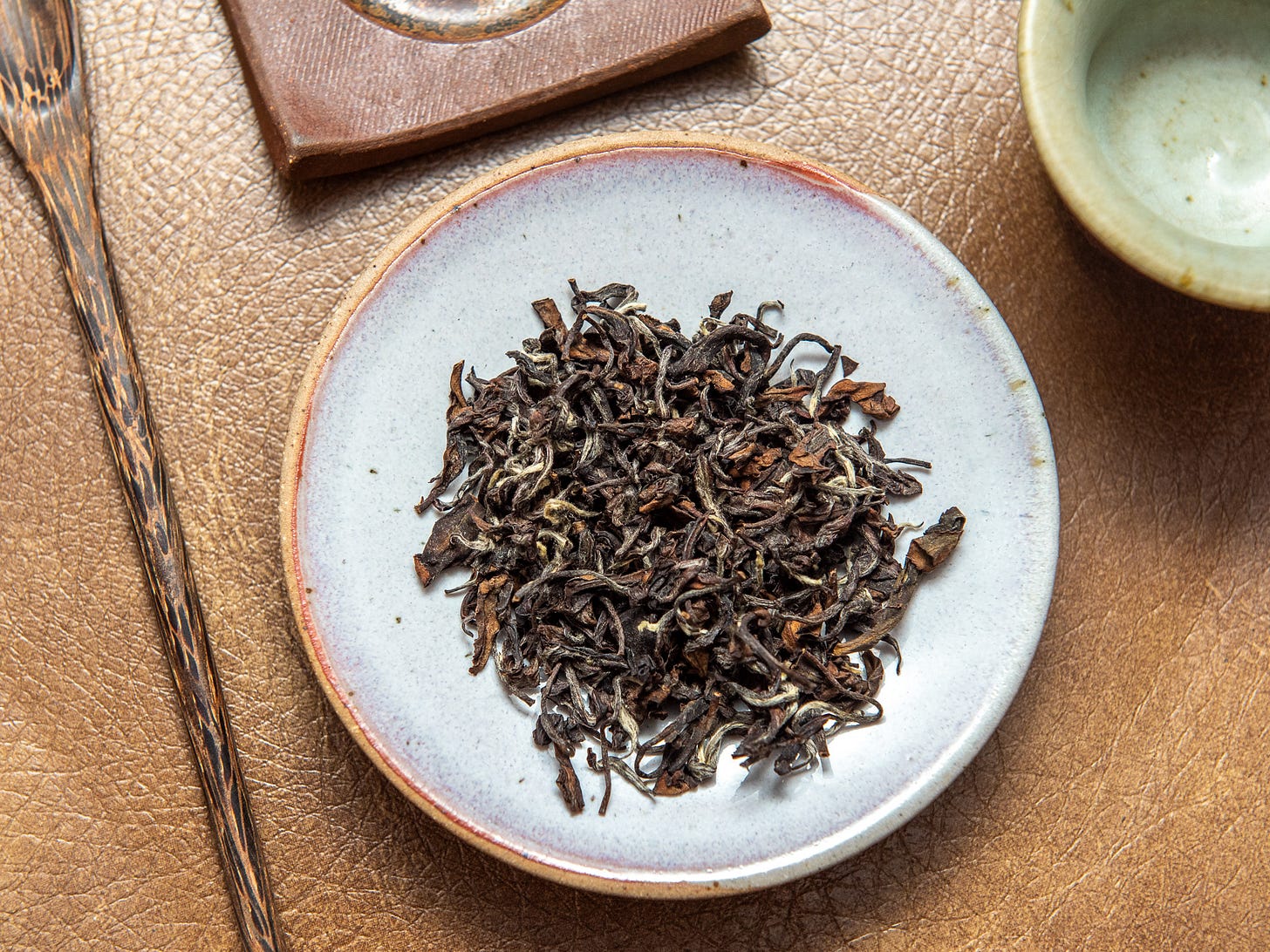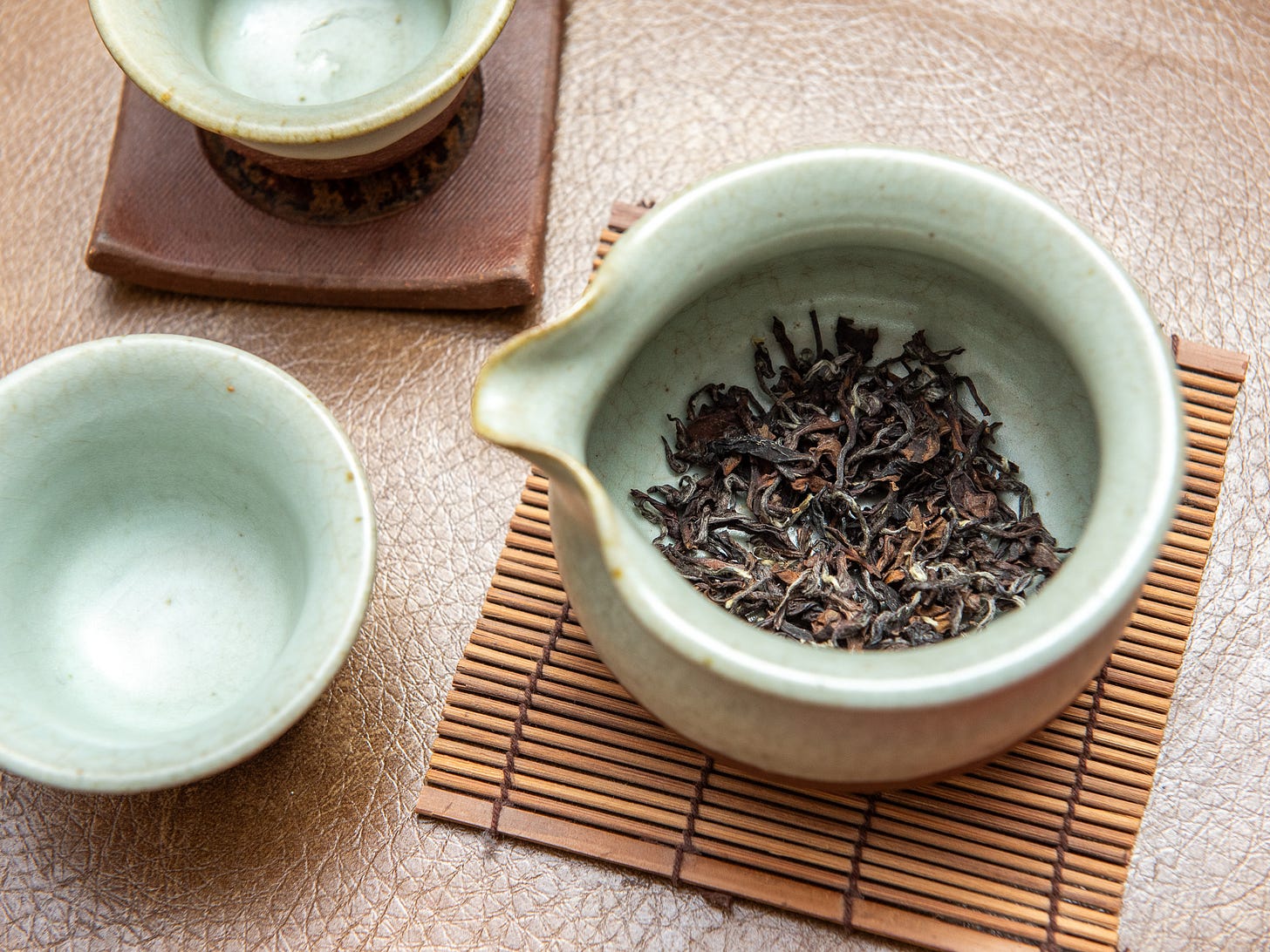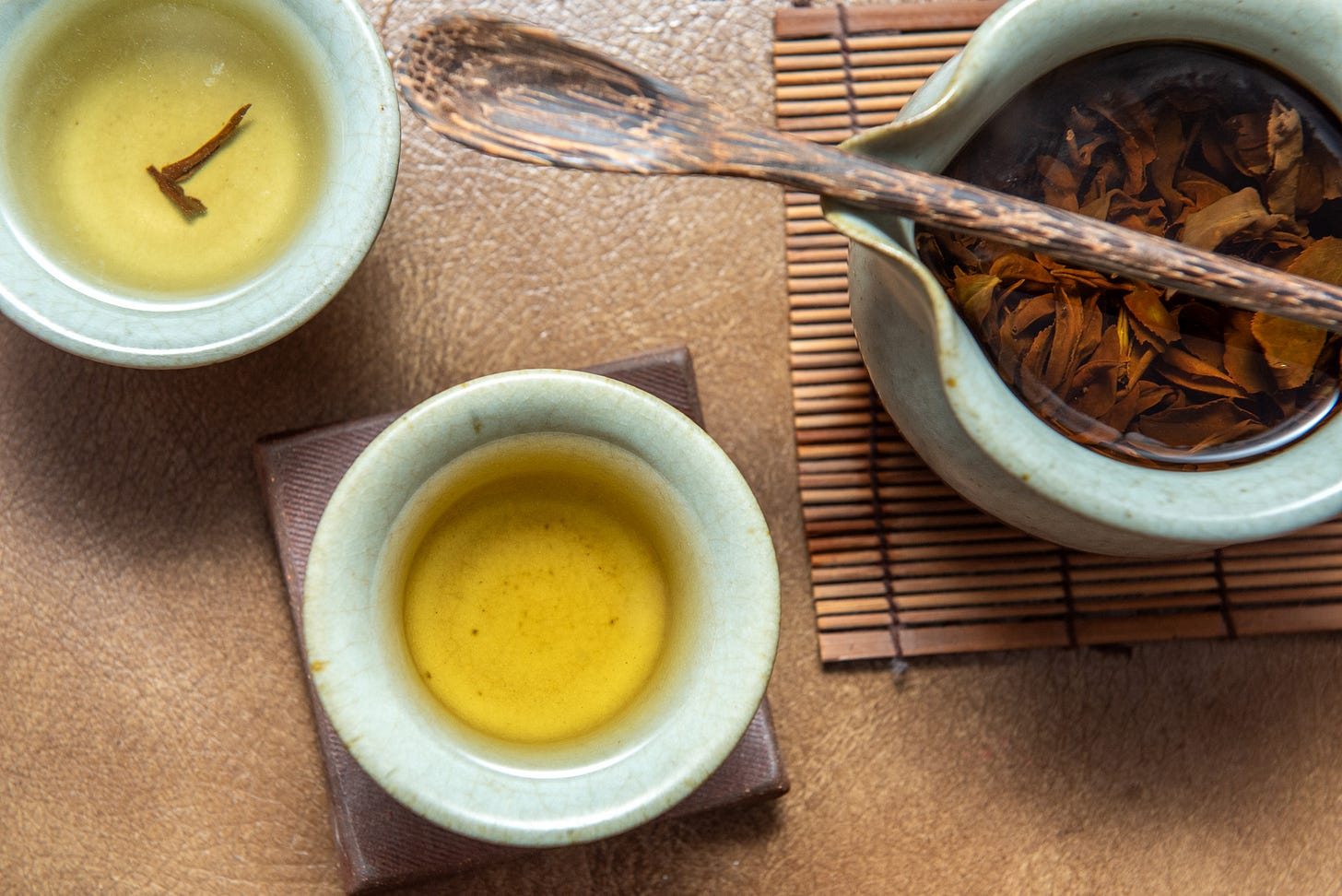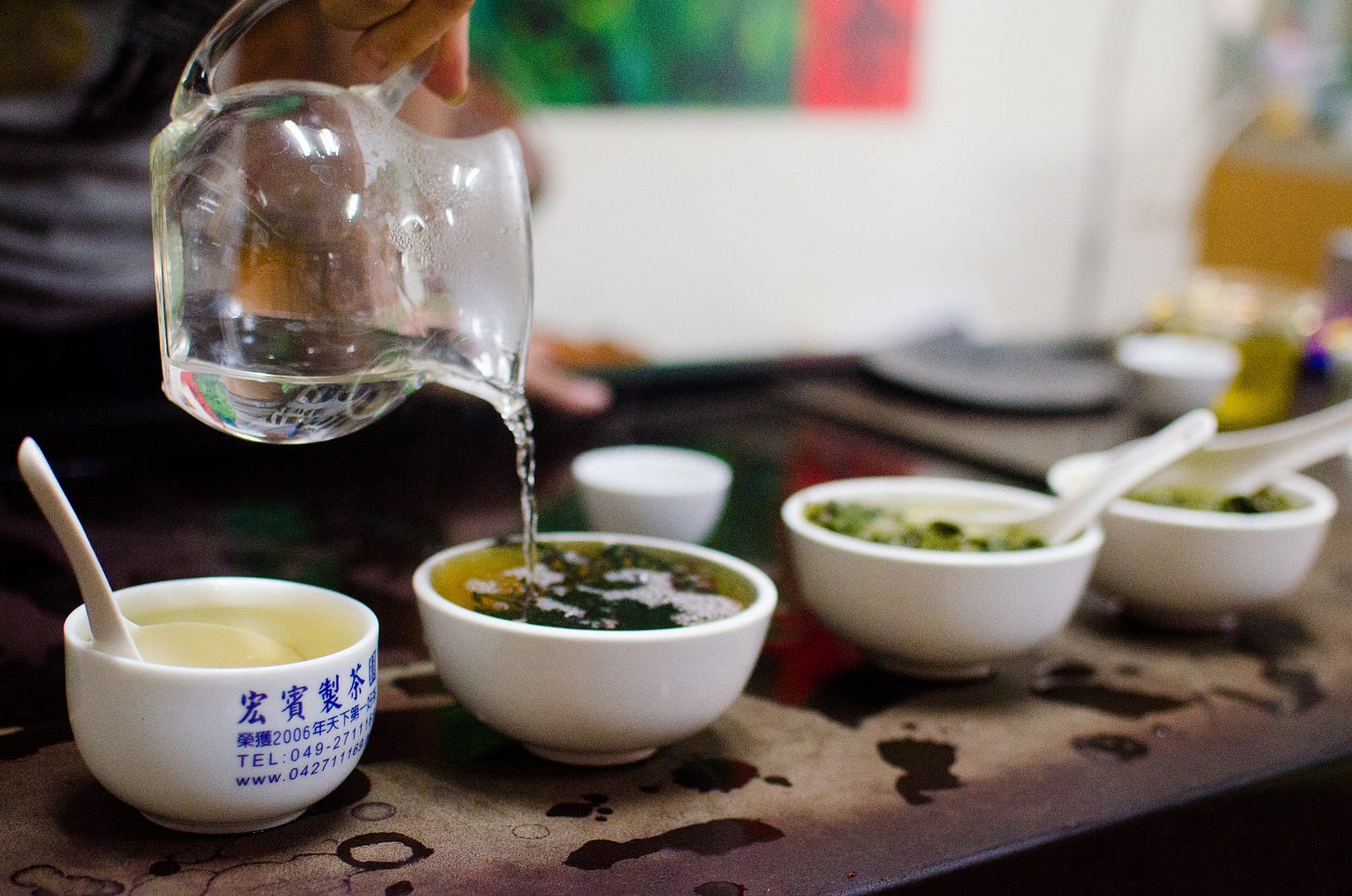My gripes with the tea world
Silky smooth oolong for spring + tea issues that grind my gears.
Liquid sunshine
The tea: Oriental Beauty oolong, sold by Cameron. $150 for 150g.
All tea is made in collaboration with nature, but this is especially with the case with dongfang meiren, a Taiwanese oolong whose processing begins before the leaves are picked. This style of tea owes its seductive honey sweetness in part to the bites of the leafhopper, an aphid-like insect that feeds on tea sap. The bites trigger an immune response in the plant that directs flavorful hormones to the point of injury. Producers then amplify this effect with a long, carefully monitored oxidation and delicate rolling. Dongfang meiren can only be made in the leafhopper’s preferred climate and with its cooperation, so production can be somewhat unpredictable.
Done right, the result is enchanting. Good dongfang meiren tastes like the first warm day of spring, when you drop everything to sit in the park and soak up the sun. There’s a carefree romance to the brew, with heady flavors of rose, dried fruit, and Turkish delight. This particular tea leaves a cool feeling on my tongue and delicate sweetness that just won’t quit. When I don’t know what tea to drink, I reach for this one, knowing that it’ll lift me up whether I pay close attention or casually sip while sending emails. This past Saturday was the first truly nice day of spring where I live, and I knew I had to revisit the tea that embodies that spirit.
The source: I was introduced to Cameron at a trade show by tea educator Ting Nicholds, who was sipping a cup of this tea from a pot that had been steeping on the show floor for a while. Even in these suboptimal conditions, the tea was impressively smooth with zero astringency, and I knew I needed some for my stash. Cameron is primarily a high end wholesaler, so Ting and I split a 600 gram order at about half the price of what’s listed at the company’s online retail store. Follow our lead and gather some friends to make a bulk purchase! You can contact Cameron’s wholesale division here to get prices and current order minimums. Kept in its packaging, the tea stores well; my batch is several years old and still drinking deliciously.
To brew: I’ve brewed this tea in all kinds of ways, yet my favorite method comes back to that long-steeped cup I enjoyed at the Las Vegas convention center. Place a heavy pinch of leaves in a mug, or a fancy ceramic serving pitcher you bought in Taiwan, whatever. Cover with boiling water and let the leaves unfurl for a couple minutes before you take a sip. The brew tastes light at first, allowing you to appreciate the aromatics. As it sits, it draws more flavor and color from the leaves. Late steeps yield a subtle woodsy impression while retaining the tea’s honeyed charm. Top off the water once the level falls halfway and repeat for as long as you like. The tea usually lasts longer than I do.
And now, a sip of haterade
When I launched Leafhopper, I promised it would be a home for “independent, bullshit-free tea writing that’s too niche or weird for mainstream publishers, and hard to find elsewhere on the internet.” I try to keep things constructive around here, but sometimes you have to crank up the hater dial and address some of that bullshit head on. What follows is a list of grievances I have with the tea market and hobbyist community that I’ve accumulated over my years of drinking.
Keep reading with a 7-day free trial
Subscribe to Leafhopper to keep reading this post and get 7 days of free access to the full post archives.






